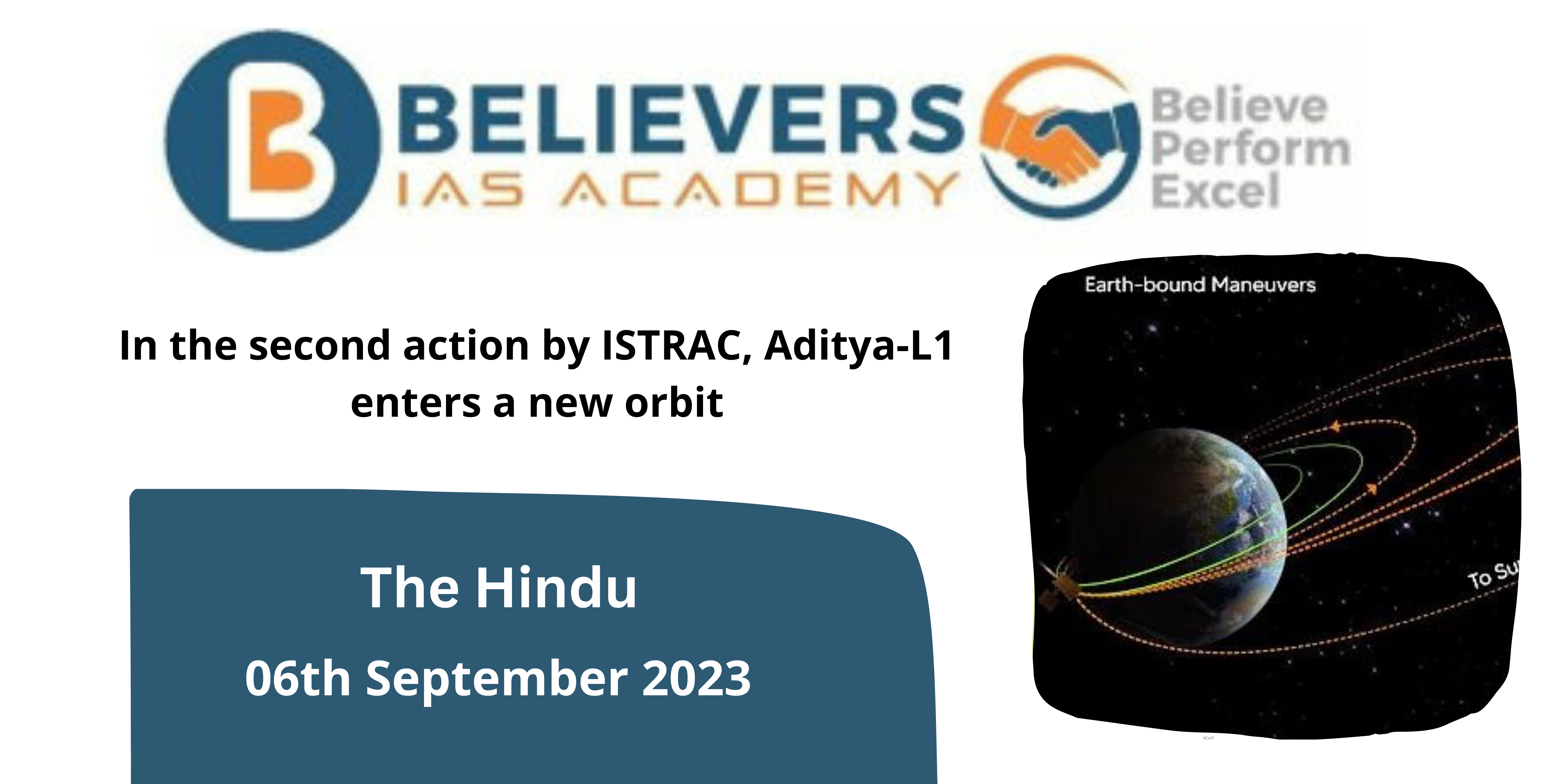In the second action by ISTRAC, Aditya-L1 enters a new orbit
Context :
The ISRO Telemetry, Tracking and Command Network (ISTRAC), Bengaluru, completed the Aditya L-1 mission’s second earthbound manoeuvre.
What is Aditya-L1?
The first Indian mission to study the Sun in space will be called Aditya L1. The spacecraft will be launched into a halo orbit around the Lagrange point 1 (L1) of the Sun-Earth system, which is situated approximately 1.5 million kilometres from Earth. The main benefit of having a satellite in the halo orbit around the L1 point is that it can observe the Sun continually without being obscured by Occultations or eclipses.
- Objective:
- The main goal of the Aditya L-1 mission, which is being carried out by the Indian Space Research Organization (ISRO), is to study the sun.
- successful manoeuvre
- Bengaluru-based ISRO’s Telemetry, Tracking and Command Network (ISTRAC) successfully carried out the mission’s second earth-bound manoeuvre.
- To orient the spacecraft for its mission, this manoeuvre is essential.
- New Orbit Parameters:
- After the manoeuvre, the spacecraft reached a new orbit with the following specifications: 282 km x 40,225 km.
- These variables specify the dimensions of the spacecraft’s orbit around the planet.
- Upcoming Manoevures:
- Three further manoeuvres are scheduled as part of the operation.
- The following manoeuvre is planned for September 10 at about 2:30 a.m.
- On September 18, the last manoeuvre is scheduled before reaching the L1 Lagrange point.
- Trans-Lagrangian Insertion:
- On September 18, following the last manoeuvre, a trans-Lagrangian insertion manoeuvre will be performed by the spacecraft.
- From this moment on, the 110-day trajectory to the L1 Lagrange point will start.
- L1 Lagrange Point:
- The L1 Lagrange point is approximately 1.5 million kilometres away from Earth.
- A spacecraft can maintain a stable position concerning both the Earth and the Sun at this gravitational equilibrium point.
- Halo orbit benefits:
- Putting a satellite in a halo orbit around the L1 point has many benefits.
- Real-time observations of solar activity and space weather are ensured by the sun’s continuous visibility without breaks caused by occultations and eclipses.
- Scientific Payloads:
- Aditya-L1 is equipped with seven scientific payloads that were created by ISRO and other national research institutions.
- These payloads are made to study the sun’s various layers, such as the photosphere, chromosphere, and corona.
- They employ a range of detectors, such as magnetic field, electromagnetic, and particle sensors.



